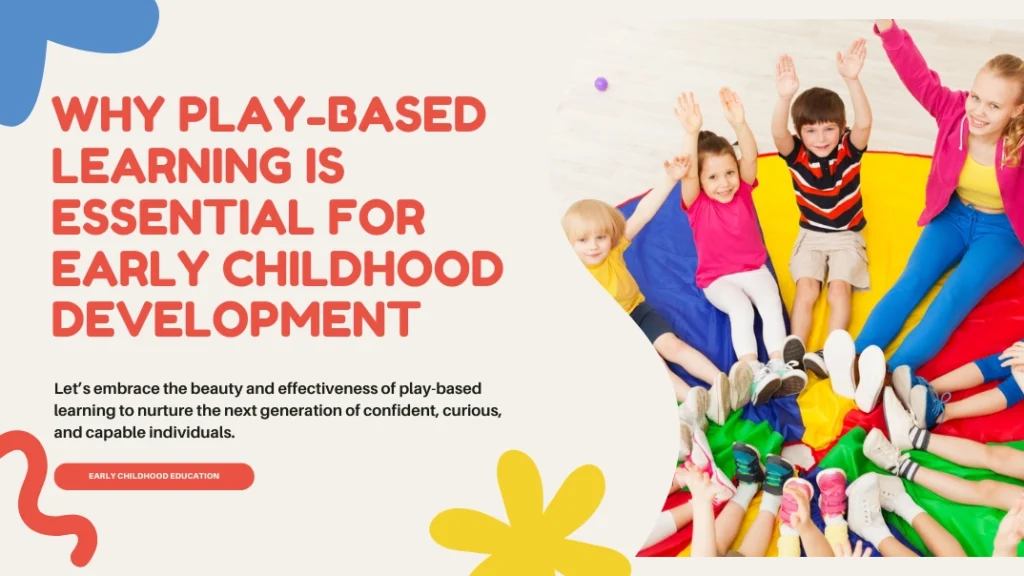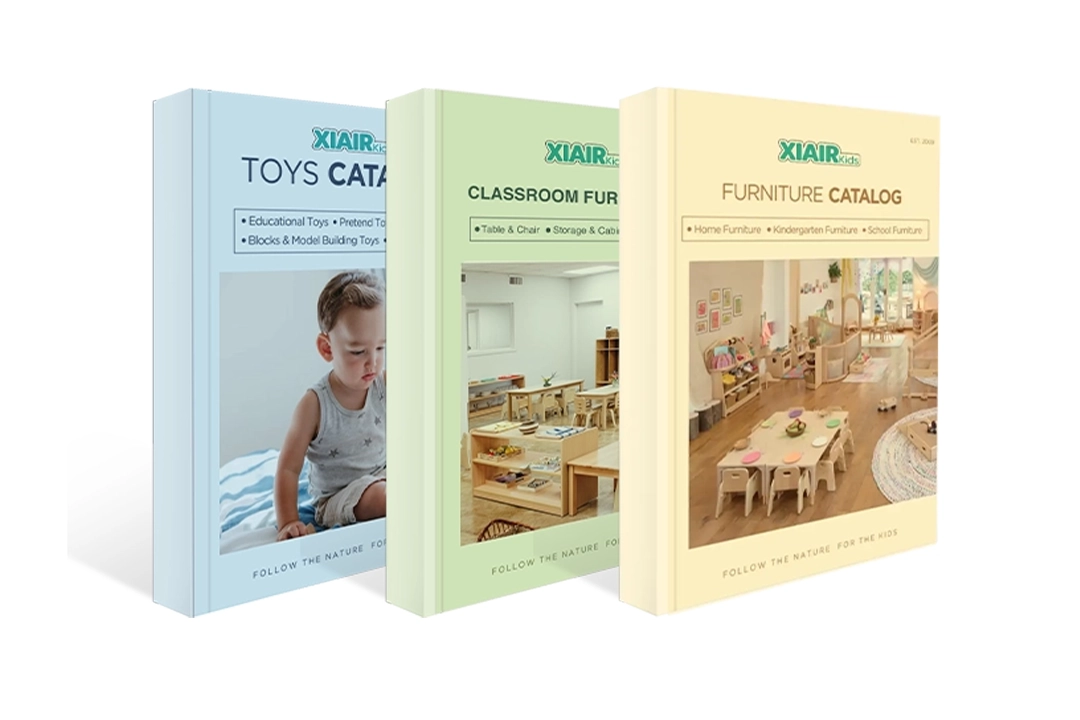For decades, traditional teaching methods have dominated classrooms. These methods often emphasize rote memorization, rigid schedules, and worksheets. While they may seem practical at first glance, they fail to address the unique developmental needs of children. Play based learning, on the other hand, offers a more holistic approach that prioritizes creativity, exploration, and social interaction.
Think about this: children are naturally curious and full of energy. Forcing them into rigid academic settings stifles their creativity and hinders their emotional and cognitive growth. The result? Children may struggle to develop the problem-solving, critical thinking, and emotional intelligence skills they need to succeed.
Despite the growing body of evidence supporting play based learning, many parents and educators still have misconceptions about its effectiveness. Some believe it’s just “playing” and doesn’t contribute to real learning. Others think it lacks structure and won’t prepare children for school. These misconceptions couldn’t be further from the truth.
Play based learning is backed by decades of research and supported by leading theorists like Piaget, Montessori, and Vygotsky. It’s a method proven to nurture creativity, foster social-emotional growth, and build a strong foundation for lifelong learning. Yet, many children today miss out on these benefits because their education is confined to outdated, rigid teaching practices.
So, what is play based learning? It’s an approach that prioritizes the natural way children learn—through play. In a play based learning environment, children are encouraged to explore their interests, solve problems, and interact with their peers meaningfully. Activities like role play, outdoor exploration, and creative art projects aren’t just fun—they are powerful tools for developing critical life skills.
Here’s the short answer to why play based learning is essential: It works because it aligns with how children naturally grow and develop. It’s a method that combines enjoyment with education, turning everyday activities into opportunities for learning.
If you’ve ever wondered why so many early childhood education experts advocate for play based learning or if you’re curious about implementing it in your classroom or at home, this article is for you. Whether you’re a parent, teacher, or policymaker, this guide will provide all the tools to understand why play based learning is the future of early education. Let’s dive in!

Understanding Play Based Learning
What Is Play Based Learning?
Play based learning is a child-centered teaching approach that fosters learning through play. Instead of rigid academic structures, play based learning in early childhood education encourages children to engage in activities that stimulate their creativity, curiosity, and problem-solving abilities.
This approach integrates structured play based learning activities (such as group games with rules) and unstructured play based activities (like free exploration with blocks or sand). Doing so allows children to explore and discover at their own pace while still meeting developmental milestones.
The definition of play based learning can be summarized as follows:
A teaching philosophy that prioritizes hands-on, exploratory, and child-led activities to promote holistic development in children.
It’s important to note that play based learning theory draws heavily from the works of educational pioneers like Jean Piaget, Maria Montessori, and Lev Vygotsky, who emphasized the importance of active exploration and social interaction in early learning.
Why is play based learning meaningful? Because it respects how children naturally learn and grow. By turning everyday experiences into learning opportunities, play based learning activities make education enjoyable, meaningful, and effective.
Why Is Play Based Learning Important?
Play base learning isn’t just about fun; it’s about building a solid foundation for future academic and social success. Research on play base learning highlights its profound impact on child development:
- Kognitive Entwicklung:
- Children who engage in play based learning activities in early childhood demonstrate stronger problem-solving and critical-thinking skills.
- A study published in the Journal of Early Childhood Research found that children who participated in play based learning programs scored higher in math and literacy tests than in traditional classrooms.
- Soziales und emotionales Wachstum:
- Role-play base learning teaches empathy and collaboration by allowing children to experience different perspectives.
- Collaborative games improve communication skills, preparing children for teamwork in later academic and life settings.
- Körperliche Entwicklung:
- Outdoor play base learning activities like climbing, running, and building forts help develop gross motor skills.
- Using scissors and crayons in art play activities strengthens fine motor coordination.
The Core Philosophy Behind Play Based Learning
The philosophy of play based learning centers on the idea that children learn best when actively engaged and having fun. This is evident in classrooms around the world that adopt this approach:
Case Study: A Play Base Preschool Classroom
In a play based preschool, the classroom is divided into distinct areas:
- A dramatic play corner, where children pretend to be shopkeepers, learning math through counting money and social skills through interacting with “customers.”
- An art station where children experiment with colors and textures, fostering creativity and sensory exploration.
- A nature table filled with rocks, leaves, and magnifying glasses encourages inquiry-based learning about the natural world.
By creating these environments, educators enable children to integrate academic concepts into their play naturally. This is why the importance of play based learning in early childhood education cannot be overstated—it respects the way children naturally explore and make sense of the world.
Ihr perfektes Klassenzimmer ist nur einen Klick entfernt!
Key Components of Play Based Learning
What Makes Play “Play-Based”?
To truly understand play based learning, it’s important to identify what makes an activity “play-based”:
- Child-Led and Interest-Driven:
Activities are guided by the child’s curiosity and interests, allowing them to explore topics that resonate with them.- Example: A child fascinated by animals might create a zoo with toy figures, learning about habitats and biology.
- Imaginative and Creative
Play-based learning activities for preschoolers often include pretend play, where children can act out roles and create narratives.- Example: Dressing up as a firefighter or teacher builds communication skills and fosters creative thinking.
- Process-Oriented:
The focus is on the experience, not the result.- Example: Building with blocks isn’t about creating the perfect tower but learning about balance, gravity, and trial-and-error.
- Interactive and Collaborative:
Play based learning activities in kindergarten encourage teamwork, helping children develop social and emotional intelligence.- Example: Group activities like building a fort or playing a cooperative board game teach collaboration and conflict resolution.
- Flexible and Diverse:
Activities can include structured play based learning activities (like scavenger hunts with a goal) and unstructured play (like free exploration with clay or sand).
The Role of Teachers and Parents in Play Based Learning
The success of play based learning in early childhood depends on the supportive roles of teachers and parents.
- Teachers: In a play based learning classroom, teachers act as facilitators, designing environments that inspire curiosity and provide opportunities for exploration. For example, they might introduce play based learning toys like building blocks or sensory bins to encourage hands-on discovery.
- Parents: At home, parents can implement play-based learning activities for 3-year-olds or play based learning activities for 5-year-olds by turning everyday routines into learning opportunities. Cooking together, gardening, or even sorting laundry can teach children math, science, and critical thinking skills.
By working together, teachers and parents create a comprehensive play based learning environment that supports holistic development.
Structured vs. Unstructured Play
| Structured Play | Unstructured Play |
|---|---|
| Guided by a teacher or parent | Led by the child |
| Activities with a specific learning goal | Open-ended exploration with no set objective |
| Examples: Group games, storytelling, scavenger hunts | Examples: Free play with blocks, sand, or costumes |
Both types of the game are essential in play based learning programs. While structured play helps children achieve specific developmental milestones, unstructured play fosters creativity and independence.
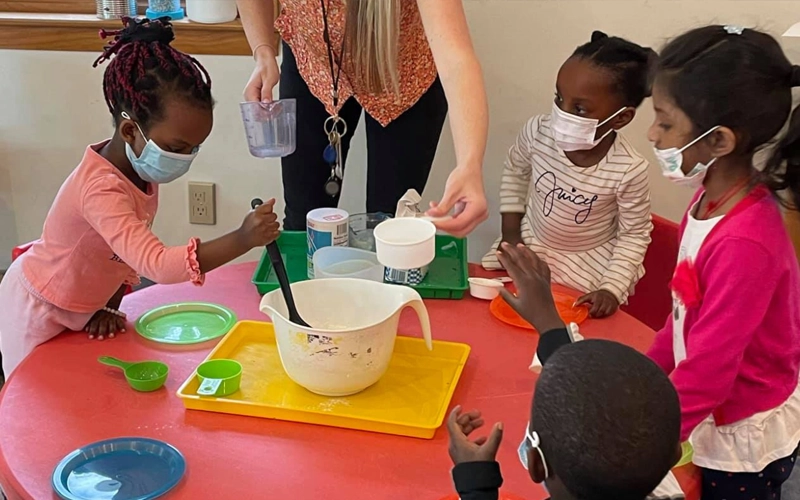
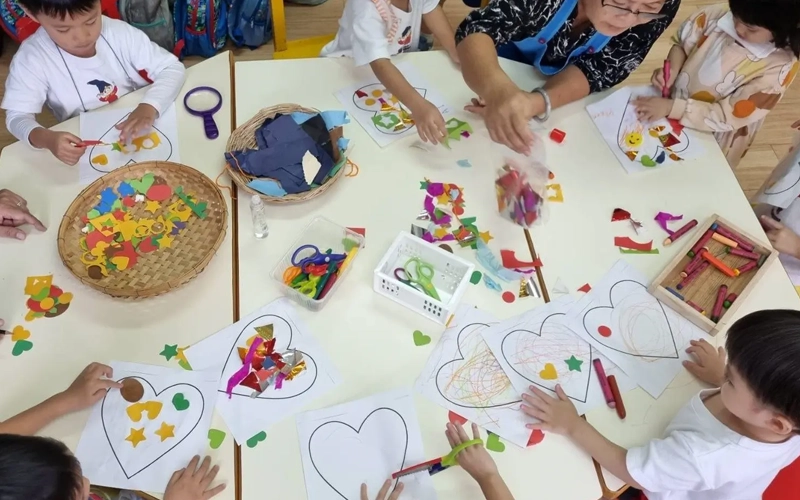
The Benefits of Play-Based Learning
Kognitive Entwicklung
Play-based learning enhances cognitive Development by encouraging children to think critically, solve problems, and explore new concepts. Activities like puzzles, building blocks, and role play introduce STEM concepts in an age-appropriate way.
For instance:
- A child building a LEGO tower learns about balance, gravity, and spatial awareness.
- During a pretend “doctor’s visit,” children practice communication and logical reasoning by diagnosing and treating a patient.
These examples illustrate why play based learning advantages extend far beyond simple play—it lays the groundwork for academic success.
Soziales und emotionales Wachstum
Imagine a play-based kindergarten classroom:
- Children collaborate to create a make-believe restaurant, learning to communicate, take turns, and solve problems.
- A child playing dress-up as a teacher practices empathy by “teaching” their peers.
These activities demonstrate the benefits of play-based learning in preschool and kindergarten, where children develop emotional intelligence and interpersonal skills that prepare them for future challenges.
Körperliche Entwicklung
- Feinmotorik: Drawing, cutting, and playing with clay improve dexterity and hand-eye coordination.
- Grobmotorische Fähigkeiten: Running, jumping, and climbing during outdoor play-based learning develop strength and balance.
- Sensorische Entwicklung: Play based learning materials like sand, water, and textured objects enhance sensory exploration.
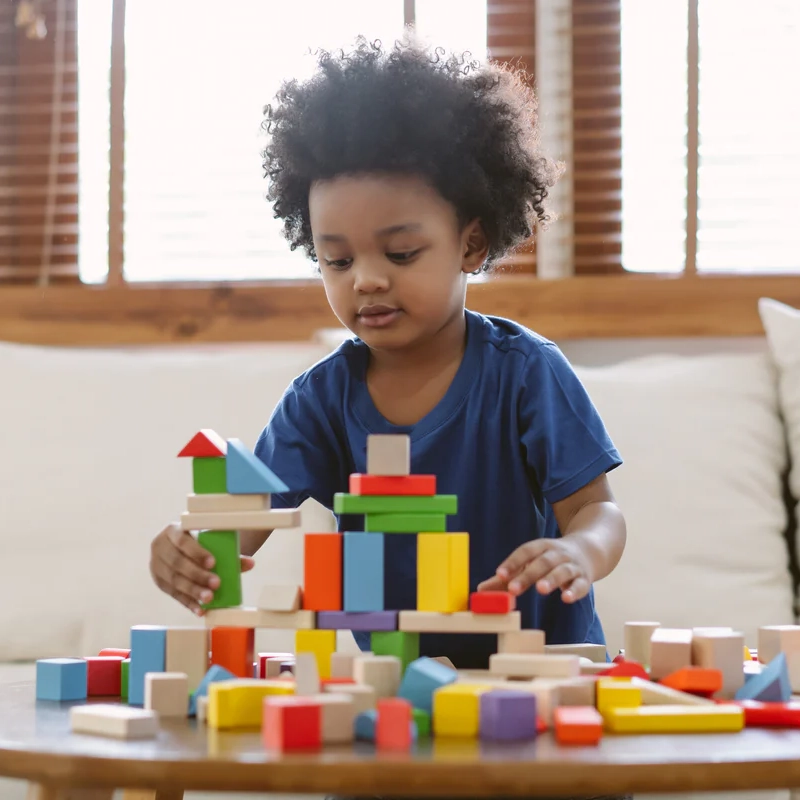
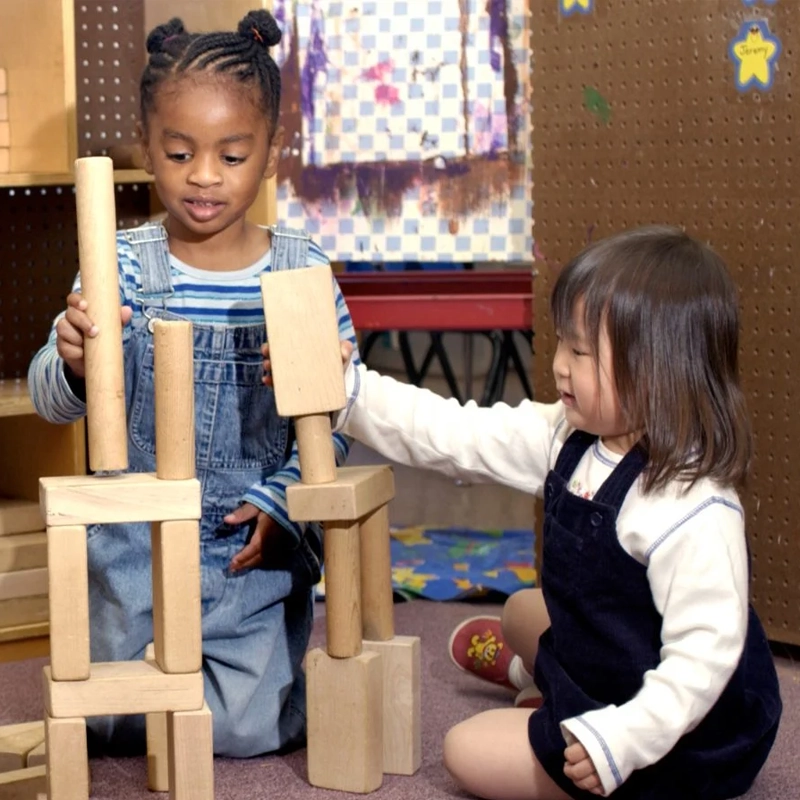
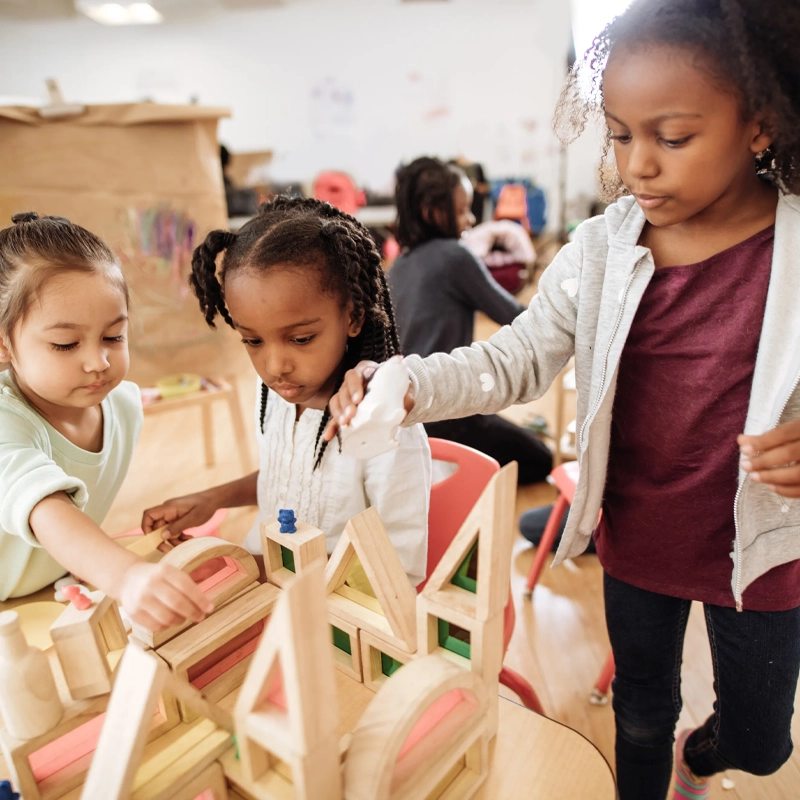
The Evolution of Play: Parten’s Six Stages
Understanding the progression of children’s play is essential for implementing practical play-based learning activities. In 1932, psychologist Mildred Parten introduced the concept of Parten’s six stages of the game, which describe how children’s play evolves as their social, cognitive, and emotional skills develop. These stages are a foundational element of play-based learning programs, highlighting the importance of tailoring activities to a child’s developmental level.
By aligning play based learning activities with these stages, educators and parents can better support children’s growth, from solitary exploration to collaborative problem-solving. Let’s explore each stage in detail.
A Step-by-Step Look at How Play Progresses
1. Unoccupied Play
- Definition: This is the earliest stage of play, typically seen in infants. Children appear to be engaging in random movements or observing their surroundings at this stage. While it may seem aimless, these behaviors are essential for sensory and motor development.
- Characteristics:
- Babies move their arms, legs, or hands and watch objects or people around them.
- They explore their world by looking, reaching, or touching without any specific goal.
- Examples of Play Based Learning Activities:
- Play-based learning materials such as mirrors, rattles, or colorful mobiles stimulate their senses.
- Introducing sensory toys that encourage tactile exploration, such as soft blocks or textured fabrics.
2. Solitary Play
- Definition: During this stage, common in toddlers under two years old, children play alone, focusing entirely on their activity without engaging with others.
- Characteristics:
- They may stack blocks, explore toys, or experiment with crayons.
- They are developing independence and the ability to concentrate on a task.
- Examples of Play Based Learning Activities for Infants and Toddlers:
- Offering stacking toys, shape sorters, or puzzles to enhance cognitive and motor skills.
- Providing art materials like finger paints or crayons to encourage creativity during independent exploration.
3. Onlooker Play
- Definition: Children watch other children play in this stage but do not join in. They learn by observing, which helps them understand social dynamics and group interactions.
- Characteristics:
- They observe peers’ activities, such as watching children build a tower or play a game.
- While they do not actively participate, they may ask questions or comment on what others are doing.
- Examples of Play Based Learning in Preschool:
- Setting up group activities that allow children to watch, such as a puppet show or a group puzzle.
- Creating observation opportunities, like watching classmates use sensory bins or build with blocks.
4. Parallel Play
- Definition: In parallel play, children play side by side without direct interaction. This is common in toddlers and preschoolers and marks an essential step in developing social skills.
- Characteristics:
- Two children might play in the same space, such as building towers with blocks or playing with playdough, but without sharing materials or collaborating.
- They are aware of each other but focus on their tasks.
- Examples of Play-Based Learning Activities in Kindergarten:
- Set up play based learning centers with materials like LEGO or sand tables where children can work together.
- Encouraging parallel play through outdoor activities, such as digging in a sandbox or riding tricycles.
5. Associative Play
- Definition: This stage involves more interaction between children. They start sharing toys and materials, but their play does not yet have a common goal. Associative play helps children practice communication and develop early collaboration skills.
- Characteristics:
- Children may talk to each other and share resources while engaging in individual activities.
- They begin to explore social interactions but do not coordinate their efforts.
- Examples of Play Based Learning Activities:
- Pretend play in shared settings, such as a toy kitchen where children cook separately but exchange ideas and tools.
- Art-based activities like group painting, where children share supplies but create individual works.
6. Cooperative Play
- Definition: In this stage, children collaborate to achieve a shared goal. This is the most advanced play stage for older preschoolers and kindergarteners. Cooperative play is essential for developing teamwork, communication, and problem-solving skills.
- Characteristics:
- Children actively plan and execute activities together, such as building a fort or playing a board game.
- They negotiate roles, solve conflicts, and work toward a common outcome.
- Examples of Cooperative Play in Play-Based Learning:
- Designing and building a structure as a group using cardboard and tape.
- Playing team-based games like scavenger hunts or role-playing scenarios like running a grocery store.
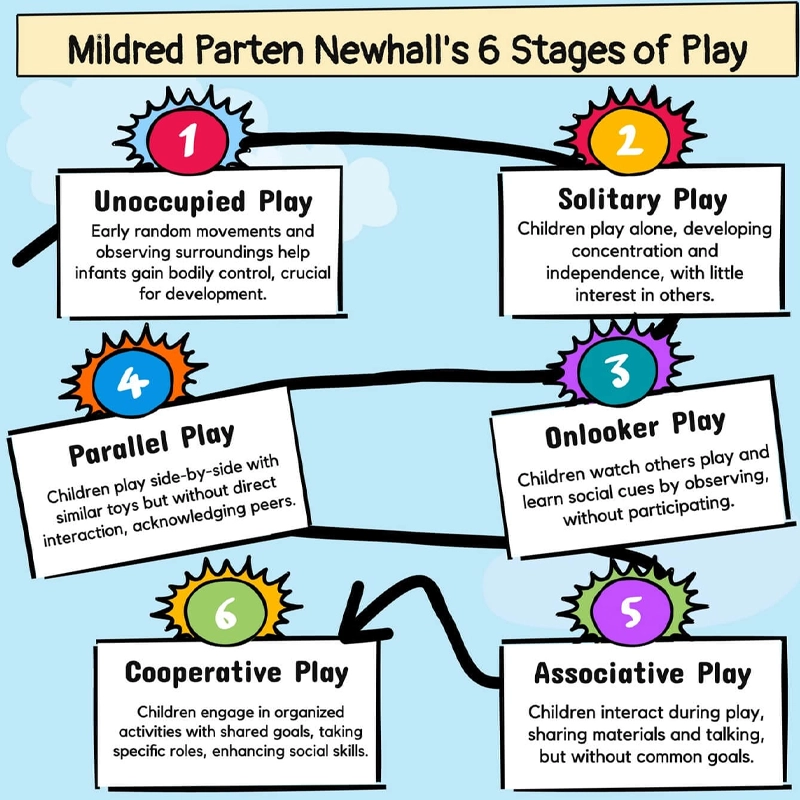
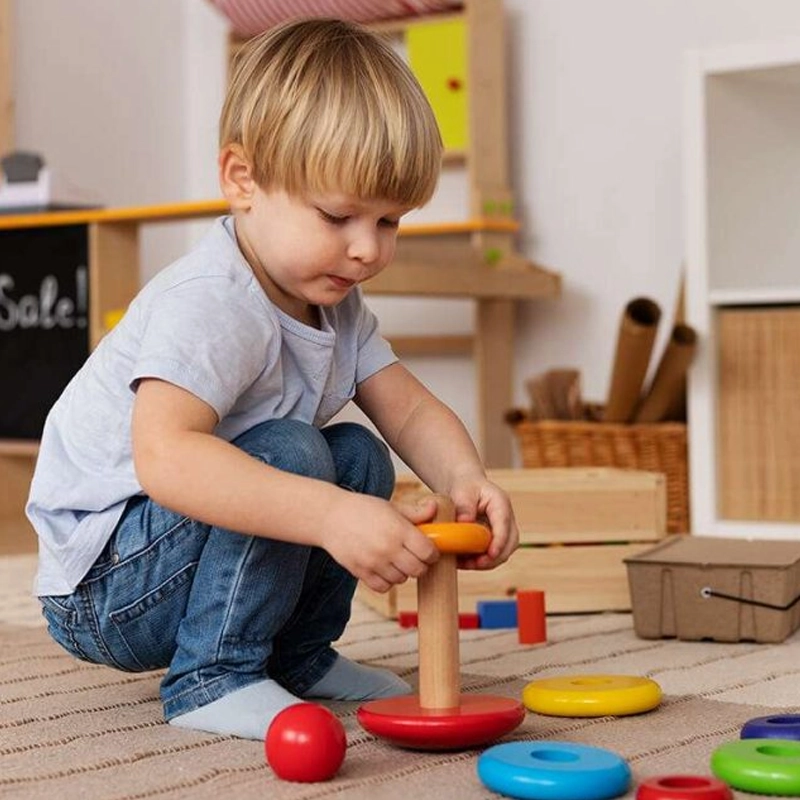
Why These Stages Matter
Understanding Parten’s six stages of play is crucial for educators and parents looking to implement play-based learning programs. Each stage represents a step in a child’s social and cognitive development, and tailoring activities to these stages ensures that children are appropriately challenged and supported.
Zum Beispiel:
- Younger children in the solitary or parallel play stages benefit most from unstructured play-based learning activities, where they can explore independently.
- Older children in the associative or cooperative play stages thrive in structured play-based learning activities, which teach teamwork, communication, and collaboration.
Connecting Play Based Learning to Developmental Theories
The evolution of play described by Parten’s six stages aligns with key theories in play-based learning philosophy:
- Piaget’s cognitive development theory emphasizes the importance of active exploration, which begins in the solitary play stage.
- Vygotsky’s social development theory highlights the value of social interaction, particularly in the associative and cooperative stages.
- Montessori play based learning integrates sensory exploration and collaborative activities, encouraging children to progress naturally through these stages.
Studies on play-based learning research have shown that children who engage in cooperative play activities—such as those found in play based kindergarten schedules—demonstrate higher levels of empathy, problem-solving, and academic readiness.
Träumen Sie nicht nur davon, entwerfen Sie es! Lassen Sie uns über Ihre individuellen Möbelwünsche sprechen!
Real-World Examples of Play-Based Learning Activities
Play-based learning activities are highly versatile and can take many forms. Whether indoors or outdoors, these activities are designed to engage children in fun, meaningful ways that support their development. Below are examples of play-based learning activities grouped into three main categories: indoor, outdoor, and nature, as well as group- and movement-based. These examples highlight this approach’s creativity and demonstrate how play-based learning in early childhood education can prepare children for life skills and academic success.
Indoor Activities
Art Play
- What It Is: Art-based activities allow children to express their creativity while developing fine motor skills and problem-solving abilities.
- Examples of Play-Based Learning Activities in Art:
- Painting with brushes, sponges, or even fingers.
- Making collages with cut-out shapes or natural materials.
- Creating sculptures with clay, modeling dough, or recycled materials.
- Learning Outcomes:
- Improves hand-eye coordination.
- Encourages self-expression and imagination.
- Introduces children to colors, shapes, and textures.
Imaginative and Role Play
- What It Is: Imaginative and role play involves pretending to be someone else, such as a doctor, firefighter, or chef. This type of Play fosters creativity and social skills.
- Example Scenario:
- In a pretend grocery store, children:
- Count play money (math skills).
- Take turns being the cashier and shopper (communication skills).
- Discuss food items and their uses (language development).
- Why It Matters: Role-playing builds empathy, teamwork, and problem-solving skills while teaching practical life concepts.
Object Play
- What It Is: Object play involves using toys or everyday items to explore concepts like cause and effect, problem-solving, and construction.
- Examples:
- Building with LEGO bricks or wooden blocks.
- Sorting objects by size, color, or shape.
- Completing puzzles or stacking rings.
- Learning Outcomes:
- Enhances spatial reasoning and logical thinking.
- Introduces early concepts of math and science.
- Develops patience and persistence.
Outdoor and Nature Activities
Sand and Water Play
- What It Is: Sand and water play are sensory activities that engage children in hands-on exploration. They allow children to experiment with textures, weights, and fluid dynamics.
- Examples of Play-Based Learning Activities for Sand and Water:
- Building sandcastles to learn about shapes and stability.
- Pouring water into containers of different sizes to explore volume and measurement.
- Using small tools like shovels, funnels, and sieves to improve motor skills.
- Why It’s Effective:
- Boosts sensory development.
- Enhances creativity through open-ended exploration.
- Introduces basic science and math concepts playfully.
Nature Play
- What It Is: Nature play encourages children to explore the environment around them, helping them connect with nature while learning about biology and ecology.
- Example Scenario:
- A preschooler walks on a nature walk to collect leaves, sticks, and rocks. They then:
- Observe insects with magnifying glasses (science exploration).
- Sort items by size or type (classification skills).
- Use collected items to create art (creativity).
- Learning Outcomes:
- Develops a sense of curiosity about the natural world.
- Teaches problem-solving and observational skills.
- Improves physical health through active outdoor Play.
Group and Movement-Based Activities
Kooperatives Spiel
- What It Is: Cooperative Play involves children working together toward a shared goal. This is common in play-based learning in kindergarten and helps build social and emotional skills.
- Examples of Play-Based Cooperative Activities:
- Building a large structure as a team using blocks or cardboard.
- Playing group games like relay races or scavenger hunts.
- Acting out a story together, each child plays a character role.
- Learning Outcomes:
- Teaches teamwork, negotiation, and conflict resolution.
- Builds communication skills.
- Encourages leadership and collaboration.
Music and Movement Play
- What It Is: Music and movement activities combine physical exercise with rhythm, coordination, and creativity.
- Examples:
- Dancing to music or imitating animal movements.
- Playing musical instruments like drums, tambourines, or shakers.
- Singing action songs like “Head, Shoulders, Knees, and Toes.”
- Why It’s Important:
- Improves gross motor skills and physical coordination.
- Enhances rhythm, listening, and timing skills.
- Builds self-confidence through performance and expression.
Why These Activities Matter
Each of these play-based learning activities supports specific aspects of a child’s development:
- Indoor activities nurture creativity, problem-solving, and fine motor skills.
- Outdoor and nature activities promote curiosity, sensory exploration, and physical health.
- Group and movement-based activities develop teamwork, communication, and physical coordination.
Whether used in play-based preschool programs, kindergarten play-based learning schedules, or at home, these activities help children build essential life skills while having fun.

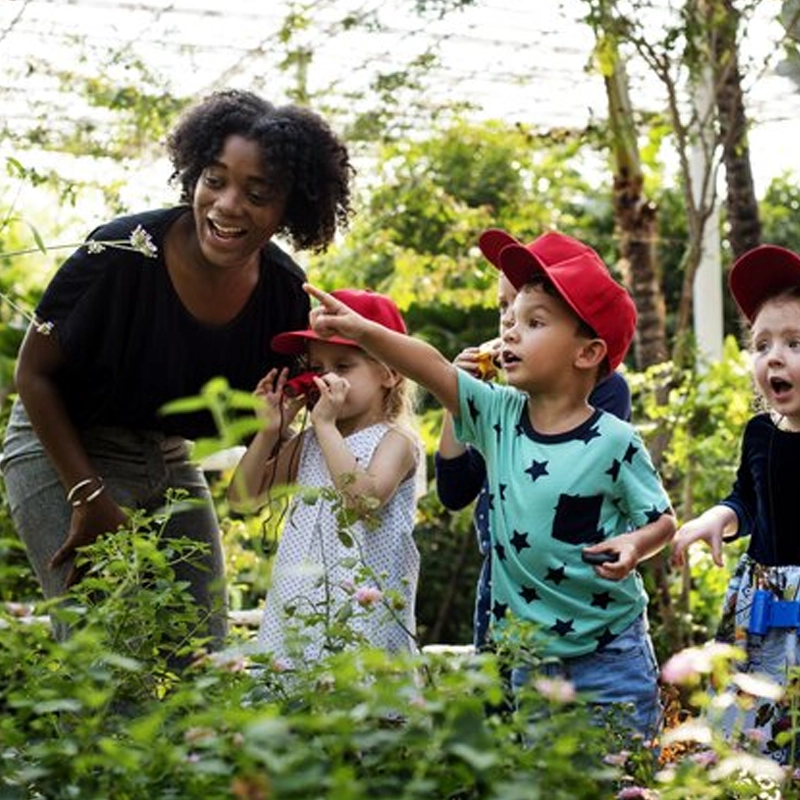
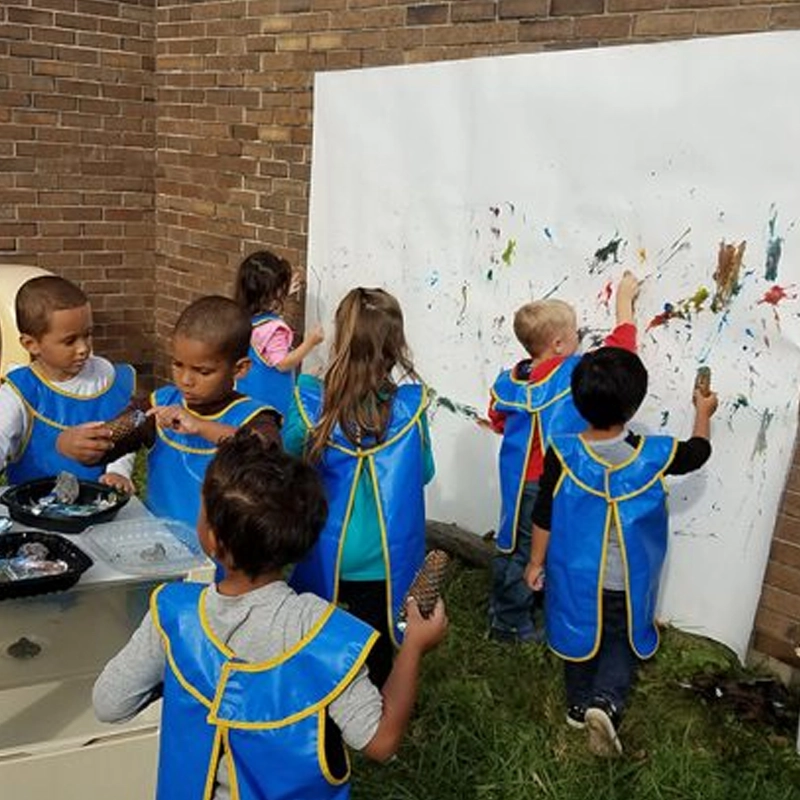
Overcoming Challenges in Play-Based Learning
While play-based learning is widely recognized for its benefits, implementing it effectively can be challenging. Misconceptions, logistical barriers, and the pressure to meet academic standards can hinder its success. Here’s how educators and parents can address these challenges and ensure that play-based learning programs thrive in schools and homes.
Misconceptions About Play-Based Learning
Many parents and educators misunderstand play-based learning and question its effectiveness. Let’s address some common misconceptions:
- “Is play-based learning effective?”
Absolutely! Studies in play-based learning research consistently show that children who engage in play-based learning activities develop stronger problem-solving, critical thinking, and social-emotional skills than those in traditional academic programs. - “Is Montessori play-based learning?”
While Montessori shares elements with play-based learning, such as hands-on exploration and self-directed activities, Montessori classrooms often have more structured environments. Both approaches value child-centered learning and foster independence. - “Play isn’t real learning.”
This is a significant misconception. Play-based learning in early childhood education teaches critical skills through play, including math, language, and science concepts. For example, building with blocks introduces children to geometry, while pretend play teaches communication and empathy.
Educators must advocate for play-based learning by sharing its benefits and using play-based learning programs that demonstrate measurable outcomes in areas like cognitive and emotional development.
Common Barriers in Schools and Homes
- Lack of Time:
- Schools often prioritize traditional academics over play based learning activities, believing they better prepare children for standardized tests.
- Solution: Integrate structured play based learning activities that align with academic goals, such as math games or science experiments.
- Limited Resources:
- Many schools and homes lack access to play-based learning materials such as sensory toys, building blocks, or outdoor equipment.
- Solution: Use affordable, everyday items like recycled materials, cardboard boxes, or natural elements (e.g., sticks, rocks) for open-ended play.
- Cultural Expectations:
- In some cultures, formal education is valued more than play, and parents may view play-based learning as “just playing.”
- Solution: Educate families about the importance of play based learning in early childhood through workshops, newsletters, or parent-teacher conferences.
- Teacher Training:
- Not all teachers are trained to implement play-based learning approaches effectively.
- Solution: Provide professional development programs that focus on play-based learning training for teachers and offer resources to support them.
Balancing Play with Academic Goals
One major challenge is balancing play-based learning with academic expectations. Traditional teaching methods often focus on worksheets and rote learning, while play-based learning activities prioritize hands-on exploration.
| Traditional Teaching | Spielerisches Lernen |
|---|---|
| Focuses on memorization | Focuses on understanding through exploration |
| Teacher-led with fixed lessons | Child-led with flexible, interest-driven activities |
| Limited room for creativity | Encourages creativity, curiosity, and innovation |
How to Balance Both:
- Combine play and academics: Use play based learning in preschool to introduce letters and numbers through puzzles, songs, or storytelling.
- Include inquiry-based activities: For example, encourage children to build a bridge with blocks while discussing its structure (science and engineering concepts).
- Design a play-based learning curriculum that aligns with academic standards but allows for flexibility and creativity.
Children can thrive socially and academically by integrating academic goals into play based learning environments.
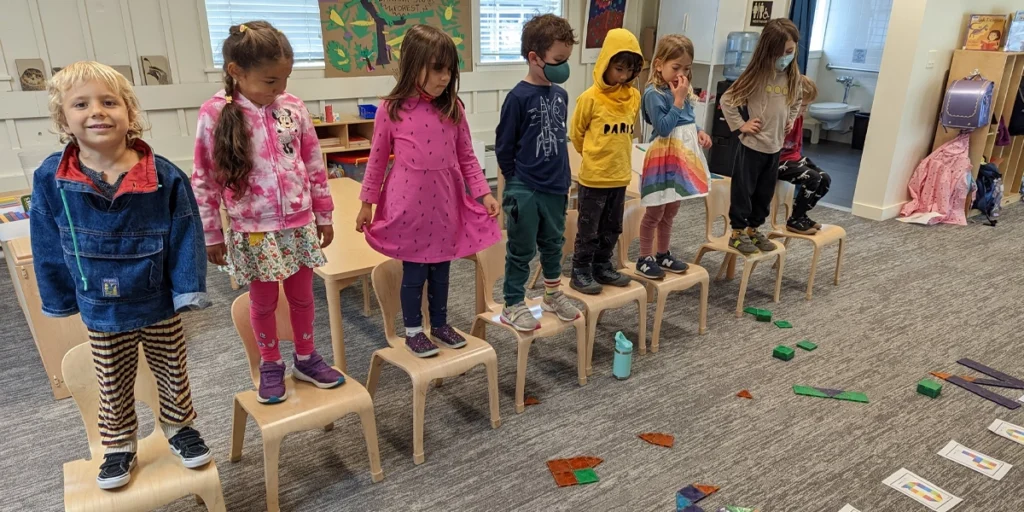
How to Implement Play-Based Learning Effectively
Implementing play based learning successfully requires careful planning, the right tools, and collaboration between teachers and parents. Below are actionable strategies to create a thriving play-based learning environment at home or in schools.
Creating a Play-Friendly Environment
- Design Specific Play Zones:
- Create areas for different types of play, such as a reading corner, an art station, or a block-building area.
- Example: A classroom might have a pretend play corner with costumes and props, while a home might set up a small sensory bin filled with sand or rice.
- Incorporate Natural Elements:
- Use rocks, leaves, sticks, and water to encourage nature play and sensory exploration.
- Example: Build a miniature garden where children can plant seeds, observe growth, and learn about nature.
- Make Materials Accessible:
- Store play based learning materials in open bins or shelves so children can easily access them and take ownership of their play.
- Ensure Safety:
- Create an environment that is safe for exploration. Remove sharp objects, minor choking hazards, or unstable furniture.
Using the Right Tools and Materials
The success of play-based learning activities depends on the materials available to children. Open-ended materials are particularly valuable because they allow for creativity and flexible use.
- Examples of Play-Based Learning Materials:
- Building blocks, LEGOs, or magnetic tiles for construction play.
- Sensory items like playdough, sand, or water for tactile exploration.
- Art supplies include paint, crayons, and glue for art play activities.
- Toys for imaginative play include costumes, dolls, or toy kitchen sets.
Children can use these tools to engage in meaningful play based learning activities that develop their cognitive, social, and physical skills.
Tips for Parents to Incorporate Play at Home
Parents play a critical role in supporting play based learning outside the classroom. Here are practical tips:
- Set Aside Time for Play:
- Dedicate 30–60 minutes a day for play-based learning activities.
- Example: Use free time after school or during weekends for nature walks or pretend play.
- Turn Everyday Activities Into Learning Opportunities:
- Cooking together can teach children about measurements, counting, and teamwork.
- Gardening can introduce science concepts like plant growth and weather.
- Rotate Toys and Materials:
- Keep play engaging by periodically swapping out toys or introducing new ones.
- Example: Replace a puzzle with a new one or add props to a pretend play station.
- Encourage Outdoor Play:
- Outdoor activities like scavenger hunts, nature exploration, or playing catch help children develop gross motor skills and curiosity.
By following these strategies, parents can create a play-based learning environment at home that complements what children learn in school.
Ihr perfektes Klassenzimmer ist nur einen Klick entfernt!
Backed by Research: The Science Behind Play Based Learning
The effectiveness of play-based learning is not just anecdotal—extensive research and expert opinions support it. Below, we dive into what the experts say, review recent studies, and address common myths about play-based learning with scientific evidence.
What Do the Experts Say?
Many leading educators, psychologists, and researchers have emphasized the importance of play-based learning in early childhood education.
- Jean Piaget: A pioneer in child development, Piaget explained that children learn best through hands-on, self-directed activities. He viewed play as a critical part of cognitive development.
- Lev Vygotsky: Vygotsky’s theory of social development highlights that collaborative play fosters language development and problem-solving skills. He argued that play provides a “zone of proximal development” where children learn by interacting with peers and adults.
- Dr. Peter Gray: A strong advocate for play based learning, Dr. Gray’s research shows that free play enhances creativity, emotional resilience, and critical thinking in children.
These experts agree that play-based learning is not just beneficial—it’s essential for holistic development.
Recent Studies on Play-Based Learning
Scientific research continues to validate the benefits of play-based learning activities for children across different age groups.
- Play-Based Learning vs. Traditional Teaching:
A 2020 study published in Frontiers in Psychology compared children in play-based learning programs to those in traditional, teacher-led classrooms. Results showed that children in play-based classrooms demonstrated higher levels of creativity, better problem-solving skills, and more muscular social-emotional development. - Cognitive and Language Development:
Research conducted by the Nationales Institut für Frühpädagogikforschung (NIEER) revealed that play-based learning in preschool improves language acquisition, especially in children who engage in imaginative and role play. Activities like pretending to run a grocery store helped children expand their vocabulary and improve communication skills. - Physical and Emotional Benefits:
Studies on outdoor play-based learning show that physical activities such as running, climbing, and playing in nature improve both physical health and emotional well-being. For instance, children participating in nature play were observed to have reduced stress and higher engagement in learning tasks.
Debunking Myths with Evidence
There are several misconceptions about play-based learning that can prevent its adoption. Let’s address them:
- “Play-based learning doesn’t prepare children academically.”
False! Studies show children in play-based kindergarten programs excel academically in later grades because they develop foundational skills like critical thinking, collaboration, and adaptability. For example, play-based maths activities, like counting objects or measuring water, teach concepts in a practical, memorable way. - “Play-based learning is unstructured and chaotic.”
Not true. While unstructured play is a part of this approach, structured play-based learning activities are carefully planned to target specific developmental goals. - “Play-based learning is just for preschoolers.”
Incorrect. Play-based learning in early childhood lays the groundwork for later academic success, but it remains effective in elementary education, primarily through inquiry-based and collaborative activities.
By addressing these myths with evidence, educators and parents can better understand the importance of play-based learning and its long-term benefits.
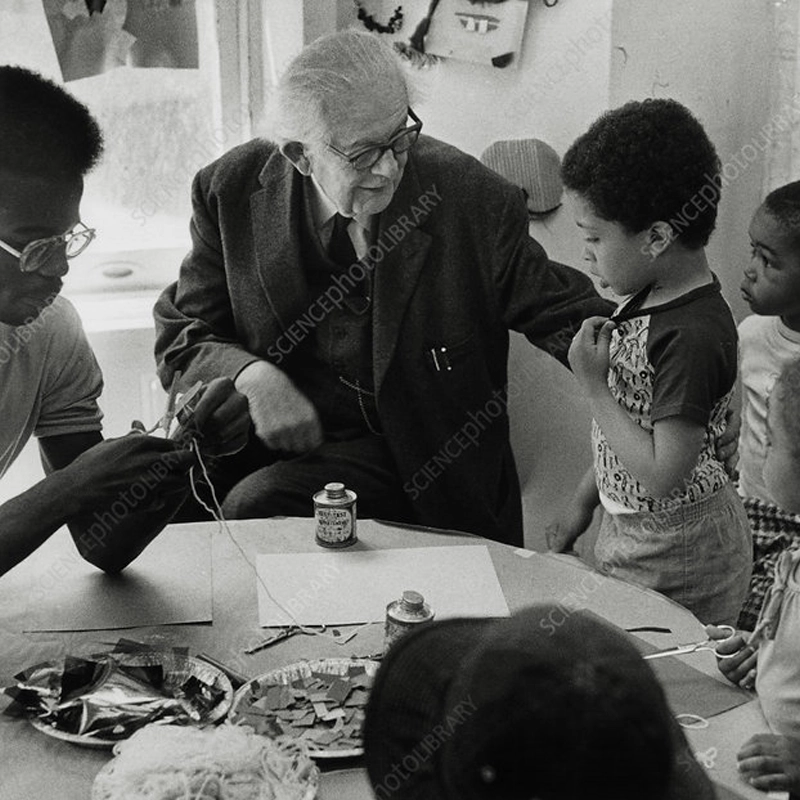


The Future of Play-Based Learning
As the world changes, so does education. The future of play-based learning is full of potential, with new trends and technologies reshaping how children play and learn. Below, we explore emerging trends, the need for policy changes, and the role of play in an increasingly digital world.
Emerging Trends in Play-Based Education
- Blended Learning Models:
- Schools combine play-based learning programs with digital tools to create hybrid learning environments. For example, children might use interactive apps to complement hands-on activities like building with blocks.
- Play-based learning activities for 4-year-olds can now include digital storytelling, where children create their own stories using tablets.
- Outdoor and Nature-Based Education:
- The push for outdoor play-based learning continues to grow, with more schools incorporating nature play into their curricula. Activities like gardening, observing insects, or building shelters from natural materials help children reconnect with the environment while learning STEM concepts.
- Inclusive and Adaptive Play-Based Learning:
- Play-based learning programs are becoming more inclusive, adapting activities for children with special needs. For example, sensory play with sand or water can be tailored to children with sensory sensitivities.
Advocating for Policy Changes
To ensure play-based learning becomes a standard in early childhood education, policymakers, educators, and parents must work together. Key areas for advocacy include:
- Curriculum Integration:
- Schools should prioritize play-based learning curricula over rigid, test-focused teaching models.
- Include play-based learning activities in national education standards to promote holistic development.
- Funding for Play-Based Resources:
- Governments must allocate budgets for play-based learning materials like blocks, sensory toys, and outdoor play equipment.
- Provide grants to schools implementing innovative play-based learning programs.
- Teacher Training and Professional Development:
- Expand teachers’ access to play-based learning training, focusing on structured and unstructured play-based learning activities.
- Parent Awareness Campaigns:
- Launch campaigns to educate parents about the importance of play-based learning, dispell myths and encourage them to adopt play-based learning at home.
The Role of Play in a Digital World
As technology becomes more integrated into daily life, it’s essential to balance digital tools and traditional play-based learning activities.
| Digital Learning | Traditional Play-Based Learning |
|---|---|
| Uses apps, games, and interactive tools | Uses hands-on materials like blocks, puzzles, and toys |
| Can track progress through analytics | Encourages open-ended exploration and creativity |
| May reduce physical activity and sensory engagement | Promotes sensory and physical development through play |
How to Balance Both:
- Use technology to enhance, not replace, traditional play. For example, a play-based maths activity (like measuring water) can be combined with a tablet app that visualizes the results.
- Limit screen time to ensure children have ample outdoor play-based learning and social interaction opportunities.
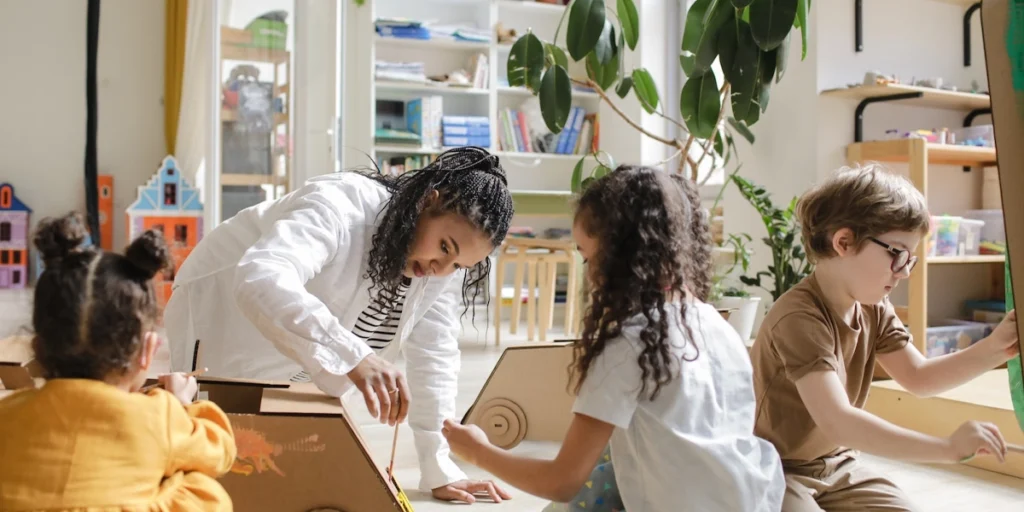
Abschluss
In today’s world, where academic pressures are mounting, play-based learning is a refreshing and scientifically backed approach to childhood education. It nurtures a child’s natural curiosity, creativity, and love for exploration while equipping them with essential life skills like problem-solving, collaboration, and emotional resilience. From structured play-based learning activities to open-ended nature play, this approach ensures that learning remains joyful, engaging, and impactful.
We’ve seen how play-based learning in early childhood education can transform children’s cognitive, social, and physical development. The benefits of this method are clear:
- It prepares children for academic success through hands-on, inquiry-driven experiences.
- It fosters emotional intelligence and social skills that are essential for real-world interactions.
- It allows children to stay connected to their innate wonder and creativity.
However, the path to fully embracing play-based learning requires effort from educators, policymakers, and parents alike. By advocating for play-based learning programs, ensuring access to play-based learning materials, and balancing play with academic goals, we can provide children with the tools they need to thrive.
As the future of education evolves, it’s crucial to remember the irreplaceable role of play. Play-based learning creates a strong foundation for lifelong learning, whether through a simple activity like building a block tower or a collaborative cooperative play project.
Let us move forward with a shared commitment to prioritizing play-based learning in our homes, schools, and communities so every child has the opportunity to grow, thrive, and succeed through the power of play.

